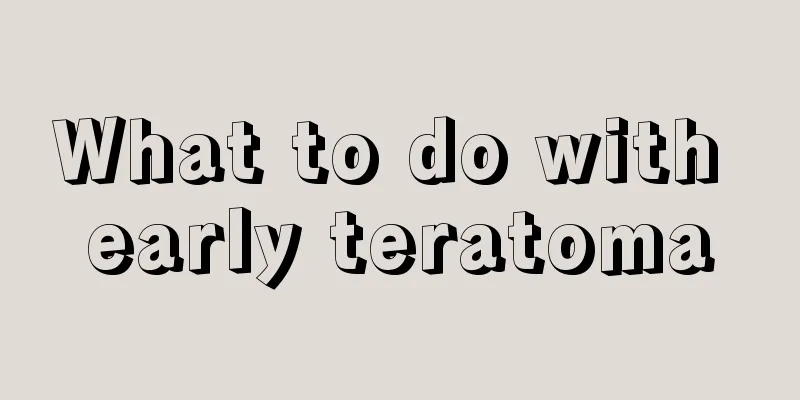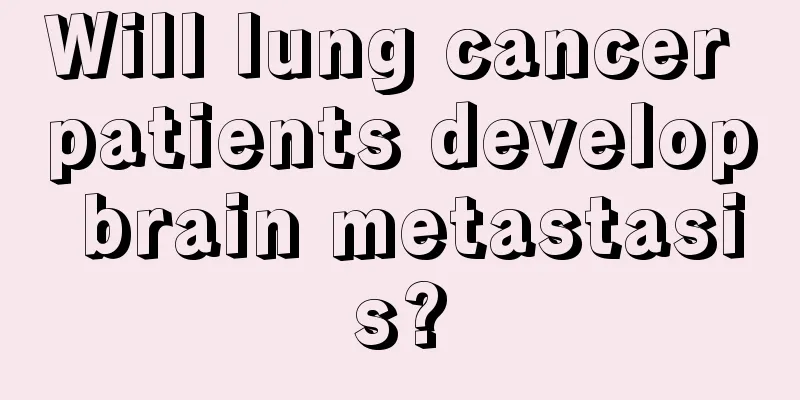What to do with early teratoma

|
What should we do with early teratoma? Teratoma does not have a clear symptom, so it is often difficult to treat teratoma patients. Even severe teratoma patients need some surgical treatment. Most teratoma patients are looking for treatment methods for teratoma. Let's take a look at the following introduction on how to treat teratoma. What to do with early teratoma 1. Intracranial teratoma Benign teratomas can only be removed surgically, but it is important to emphasize the three-dimensional multi-point sampling of pathological specimens to avoid missing the malignant components. If the tumor can be completely removed, it is expected to be cured. Since the tumor is often located in the midline, it is difficult to completely remove it surgically. If it cannot be completely removed, cerebrospinal fluid shunt surgery can be performed as appropriate to relieve obstructive hydrocephalus. Radiotherapy and chemotherapy are ineffective for benign teratomas. For immature and malignant teratomas, chemotherapy is performed first and then radiotherapy. If the tumor has not disappeared after reexamination, surgical resection is performed, and chemotherapy is continued for 2 courses after surgery. 2. Gastric teratoma Gastric teratomas are mostly benign and have a good prognosis if removed surgically early. Long-term follow-up is required after surgery, and AFP should be checked regularly. If there is no decrease or if it increases after a decrease, it indicates recurrence or metastasis, and further treatment is required. 3. Testicular teratoma Surgery is the first choice for the treatment of testicular teratoma. For children with testicular teratoma, testicular preservation surgery can be considered if the AFP level is normal, B-ultrasound shows the presence of normal testicular parenchyma, and intraoperative frozen pathology examination results exclude malignant tumors. Patients with testicular dermoid cysts and testicular teratomas in children do not need other treatment after surgery. Radical orchiectomy plus retroperitoneal lymph node dissection is performed for postpubertal testicular teratomas with retroperitoneal lymph node metastasis. The vast majority of teratoma metastases are consistent with the pathological type of the primary lesion, but embryonal carcinoma components are also found in teratoma metastases. The malignant components in distant metastatic teratomas are not well responsive to chemotherapy regimens for germ cell tumors. 4. Ovarian teratoma (1) Treatment principles The treatment principles of immature ovarian teratoma are: surgical principle, adopting surgical methods that preserve fertility; after surgery, effective combined chemotherapy should be adopted as soon as possible. For recurrent tumors, different specific plans should be formulated based on the rules of reversal of the malignancy of immature teratoma and combined with different specific situations. (2) Surgical treatment ① Surgical scope Most tumors are unilateral, and patients are often very young. It is often recommended to perform unilateral adnexectomy to preserve fertility. If the patient has no fertility requirements and the tumor is stage II or III, bilateral adnexes and hysterectomy can be performed. The greater omentum is a common site of metastasis. Regardless of the early or late stage of the tumor, the greater omentum is resected. There is no consensus on whether the retroperitoneal lymph nodes should be routinely removed. For patients with extensive abdominal metastasis, tumor cell reduction surgery should be performed as much as possible to achieve basic tumor removal. ②Surgical treatment of recurrent tumors: Recurrent tumors of immature teratomas are still mainly treated by surgical resection, supplemented by effective combined chemotherapy. ③Secondary exploratory surgery is not recommended at present. (3) Chemotherapy Chemotherapy is an essential treatment for immature ovarian teratoma. After the initial surgery, early use of combined chemotherapy can prevent recurrence and improve survival rate. The explanation of how teratoma should be treated, I believe that teratoma patients will not worry about their teratoma can not be cured, teratoma is completely curable, as long as teratoma patients choose the right treatment method, adherence to teratoma treatment is particularly critical. Finally, I wish teratoma patients a speedy recovery. |
<<: How to completely cure uterine teratoma
Recommend
Specific examination methods for testicular cancer
Testicular cancer mainly occurs in young and midd...
How to check liver fibrosis and what indicators to look at
Liver fibrosis may lead to cirrhosis, so it deser...
What are the auxiliary examination methods for cervical cancer
With the progress of the times, people's livi...
What are the symptoms of a fungal foot infection?
If the feet are infected by fungi, diseases such ...
How long does it take to cook raw rice dumplings in a pressure cooker
Using a pressure cooker is a very time-saving and...
How serious is the harm caused by thyroid cancer
How great is the harm caused by thyroid cancer? C...
How much water is normal for a four-month-old baby to drink?
When the baby reaches four months old, it is time...
What is the main treatment for lung cancer? The various methods for lung cancer have their own advantages. Analysis
Air pollution in cities has led to worsening air ...
What are the causes of small cell lung cancer
The incidence of small cell lung cancer is increa...
What to do if lumbar ligament is strained? It turns out there are four nursing methods
Lumbar ligament sprains are mostly caused by peop...
How to use medicine for patients with cystitis
I believe many people have heard of the disease o...
What are the important things that patients with gastric cancer should pay attention to in their daily lives?
What are the important things that patients with ...
How to use a steam eye mask
The pace of life is very fast now, which leads to...
Can endometrial cancer be clinically cured?
Can endometrial cancer be clinically cured? This ...
Smelly teeth? So this is the reason
Some people in life have smelly teeth, but they d...









